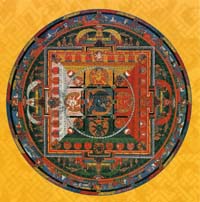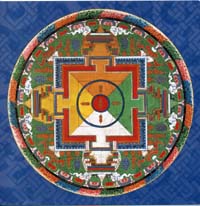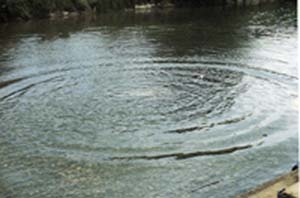
School: Walworth Barbour American International School in Israel
Project Title: "Tap into the Himalayan Region"
|
Himalayan Buddhist Art
ICONOGRAPHY – “Image Writing”… how do you recognize a deity? [the Buddha] - “Prabha Mandala” -Circle of light around the head [the Bodhisattva] -princely robe
ICONOLOGY – “Study of Icons” … the meaning and symbolism, style and aesthetics, 2 nd century stories, themes [birth of the Buddha, Shakyamuni at the moment of
Lotus is a symbol of transformation. *Imagery does not change in Buddhist art but style varies throughout the world. Buddhism can accommodate local and regional traditions. A Buddhist wall hanging scroll is read with the following diagram in mind:
1. Art in Context
Check out these great web sites that display exquisite collections of Asian art... *mandala : Five Buddha Mandala (Panca Jina Mandela) Monk draws circles with thread and consecrates area with Has cardinal directions, colors and gestures Made using fine, colored loose dust Is a 3-D visualization upwards that is read from the outside When finished, an invitation to the god is given for him to Swept away at the end of the ritual showing
"At the end of the Tibetan Buddhist ceremony, H.H. the Dalai Lama pours the dust of the once mandala into a nearby river... where it forms one last mandala." Click here to check out a 3-D image of a Tibetan Buddhist mandala.
Created in a congenial, competitive atmosphere of monks Saved in a cold climate, artists dip their hands in icy water Colored yak butter and sculpted with special tools Process is the meditation, once ritual/festival is finished,
Meditation and Puja – purifying the environment and the body through dance, gestures and offerings Tibetan art is usually created on a scroll that can be covered in the middle with attached cloth on the top. The scroll is portable. There is a movement now where the art is being redefined in strict coherence with the doctrine and the one loose, free-hand style of Tibetan art is diminishing!
“Lost-Wax” Technique unique to Newar artists and found in Patan, Nepal [Patan, one of the 18 th century kingdoms of the Katmandu Valley] -This gold gilding on a copper surface began in the 7 th century using pure copper (wires) from Singapore and gold from Tibet. For hundreds of years, the Newar have kept this process secret and would not share any of the “family techniques” with their Tibetan sources.
There are generations of these craftsmen in Pagan and the quality of each piece depends upon the family secret. Neighbors do not share their technique with each other. The base of these figures are empty so they will serve as areas of consecration! Most figures are religious based still since secular themes have not become popular. “Repousse Technique” – creation of images by hammering flat sheets of metal honored at the Samyaka Festival which honors the past Buddhas.
“ Painting Technique” – always on a very thin and smooth canvas of cloth; using a grid draw the deity and landscape elements; choose expression and types of elements; prepare pigments and brush (usually made of horsehair); first paint in the landscape elements (the apprentice does this usually); then the center or Buddha is painted (usually by the master); shading is added (depending on the particular school that they follow); and then the application of gold takes place; and finally the varishing. The words… OM AH HUM are added to the back to give the cloth painting good karma by acknowledging the “crown throat and heart” of the piece. Cover Remember … these creations have an ephemeral use! |
This site was created by (insert name) at the NEH Summer Institute "Cultures and Religions of the Himalayan Region," held at the College of the Holy Cross, Summer 2006













